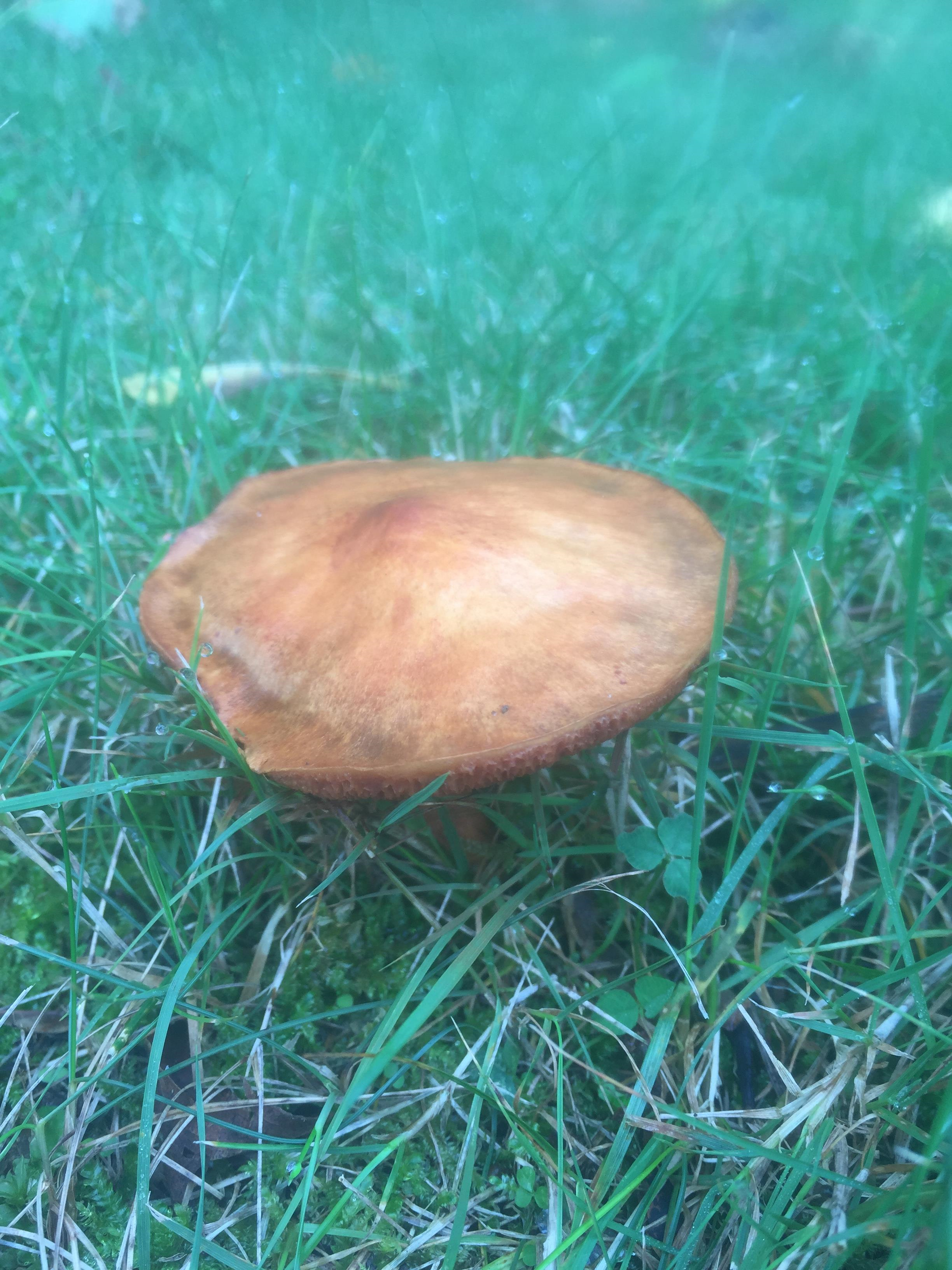Chalciporus piperatus
This small bolete can be observed amongst Amanita muscaria, possibly parasitizing the mycorrhizal relationship it has with the host tree.

Chalciporus piperatus (Bull.) Bataille (1908)
- Phylum: Basidiomycota
- Class: Agaricomycetes
- Order: Boletales
- Family: Boletaceae
- Genus: Chalciporus
- Species: piperatus
- Authority: (Bull.) Bataille (1908)
- Collection #: PLP847_2018_411
- Locale: Frye Street, East Lansing, Michigan
This small bolete can be observed amongst Amanita muscaria, possibly parasitizing the mycorrhizal relationship it has with the host tree. It is widely distributed under coniferous trees in North America. The orange-brown cap is 2-7 cm and and stipe is. C.piperatus produces a cinnamon colored spore print and are 7-11 x 3-4 µ. The flesh is yellow with pink tones around the edges.
For those of you who will put any mushroom in your mouth you will soon understand where piperatus comes from, as it is overwhelmingly peppery. This mushroom has been used as a spice in many countries though many guide books declare it as inedible.

- Carluccio A. (2003). The Complete Mushroom Book. London: Quadrille. p. 34. ISBN978-1-84400-040-1.
- Kuo, M. (n.d.). Chalciporus piperatus, MushroomExpert.Com



 Print
Print Email
Email



